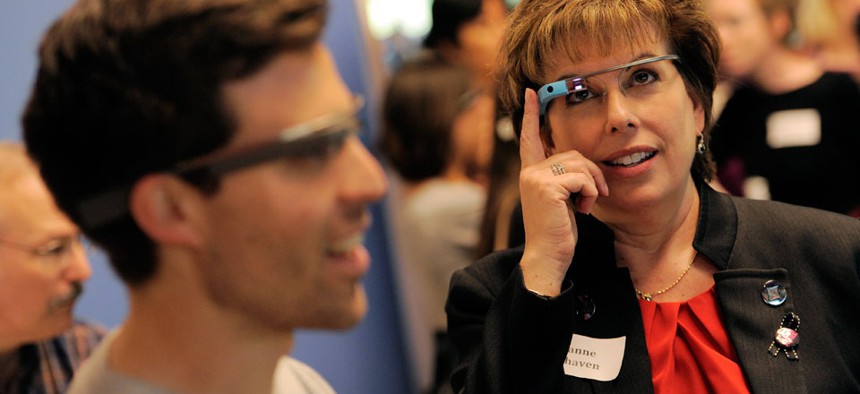Wearables Bring New Sense of Fashion to Public Sector

Chris Pizzello/AP
There is a new generation of technology coming that will rock the boat in terms of how we live our lives and do our jobs within any industry – wearables.
Chuck Brooks is vice president and client executive of Department of Homeland Security for Xerox.
“I can’t imagine my life without it.”
A common statement when people talk about their smartphone, no matter their age. It’s true; it’s hard to remember life without these devices available at our fingertips. Some would insist they are no less important than our eyes, ears, hands or feet, or so it seems.
Times are changing and we are in the midst of a smart mobility explosion with endless possibilities. While smartphones, tablets and similar mobile devices remain prevalent, there is a new generation of technology coming that will rock the boat in terms of how we live our lives and do our jobs within any industry – wearables.
But why is there so much hype around wearables? Data. For every smartphone, tablet, sensor clothing or pair of glasses, there’s a steady flow of information coming and going that can be collected, analyzed and applied to every industry. These insights have the ability to shape the next-generation of work and transform the way work gets done.
Its adoption has begun to spread beyond the private sector to government agencies, public safety, health care and constituent service.
A recent survey by Ipswitch revealed that an alarming 85 percent of public sector organizations have no IT plan that includes wearable technology. However, even without a plan, some agencies are already experimenting with the use of wearables.
For example, Utah was the first state to develop a Google Glass app to help notify constituents of the status of their train or bus. We are beginning to see that wearables have the potential to deliver real-time transit information to shape traffic control and parking management in busy urban settings.
Wearable technology is also helping protect those in public safety who give their lives to protect citizens. The NYPD is now using applications to help them identify and apprehend suspects. Firefighters can ingest sensors and data-transmitting pills to track their heart rate, which will then send an alert to pull a firefighter out of disaster before cardiac arrest or heat stress sets in. High-tech wearable headsets allow military personnel to live-stream 3-D maps of battlefields and different drone feeds, among other features.
Additionally, smart clothing and wearable devices can help snipers know the best time to fire by giving them insight into their physical conditions like their heart rate, and if they are shaking or perspiring, ultimately improving accuracy.
In health care, wearables are revolutionizing operations by providing real-time access to electronic health records and assisting doctors in the operating room.
Imagine a world where unobtrusive sensors are placed on patients that can track vitals and notify them before they have a heart attack. Wearables can monitor a patient’s health and ensure their safety at home by allowing medical professionals to act quickly and alert them, instead of waiting for the patient to come in for a checkup or get rushed to the emergency room.
When it comes to customer service, wearables can be embedded in headphones and used to make operations remote and adaptable, enabling agents to conduct work from home instead of just from the office. Giving field workers wearable technology gives them to opportunity to collect and sort data in real-time and can help customer service professionals identify a problem before it becomes an issue.
Wearables embedded in devices or on an agent’s clothing can allow them to virtually interface with customers to solve problems faster and increase customer satisfaction.
As with any discussion about wearables, security and privacy are major concern. Just like mobile devices, wearables can be hacked or infected with malware. Developing protocols for monitoring, testing, and securing critical citizen information will be necessary, especially for public use. In an increasingly connected world, privacy and security will be paramount.
Overall, constituents win because they gain the benefit of frontline workers and government agencies that work smarter and faster because they are fully informed, engaged and connected.
But the most important people in this equation are the day-to-day workers engaging with the technology. These workers are the ones affected by this technology and they must be agile, advocates for change within their organization to start the evolution so they can begin to realize the full impact that wearables can have on their personal and professional lives.





